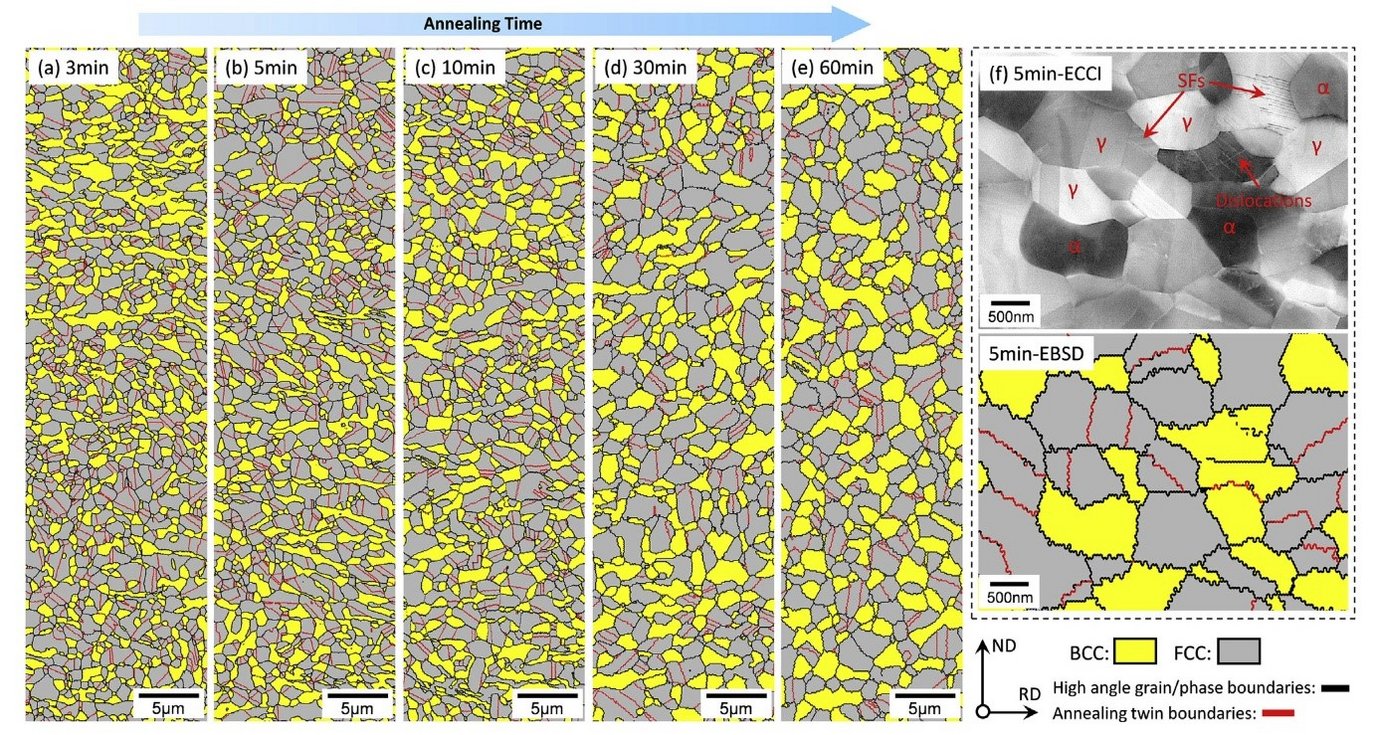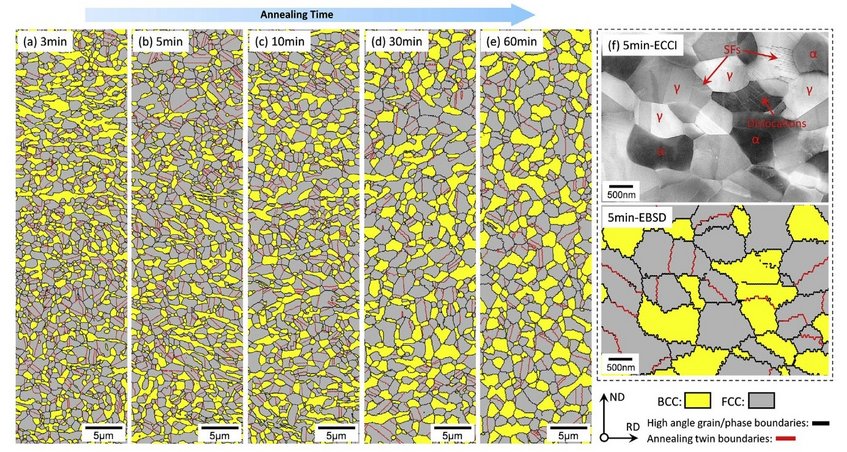Macroscopic to nanoscopic in situ investigation on yielding mechanisms in ultrafine grained medium Mn steels: Role of the austenite-ferrite interface
Ultrafine austenite-ferrite duplex medium Mn steels often show a discontinuous yielding phenomenon, which is not commonly observed in other composite-like multiphase materials. The underlying dislocation-based mechanisms are not fully understood. In this project we show that medium Mn steels with an austenite matrix (austenite fraction ~65 vol%) can exhibit pronounced discontinuous yielding. A combination of multiple in situ characterization techniques from macroscopic (a few millimeters) down to nanoscopic scale (below 100 nm) is utilized to investigate this phenomenon. We observe that both, austenite and ferrite are plastically deformed before the macroscopic yield point. In this microplastic regime, plastic deformation starts in the austenite phase before ferrite yields. The austenite-ferrite interfaces act as preferable nucleation sites for new partial dislocations in austenite and for full dislocations in ferrite. The large total interface area, caused by the submicron grain size, can provide a high density of dislocation sources and lead to a rapid increase of mobile dislocations, which is believed to be the major reason accounting for discontinuous yielding in such steels. We simultaneously study the Lüders banding behavior and the local deformation-induced martensite forming inside the Lüders bands. We find that grain size and the austenite stability against deformation-driven martensite formation are two important microstructural factors controlling the Lüders band characteristics in terms of the number of band nucleation sites and their propagation velocity. These factors thus govern the early yielding stages of medium Mn steels, due to their crucial influence on mobile dislocation generations and local work hardening.

